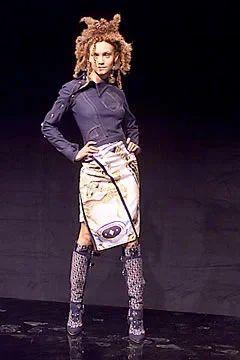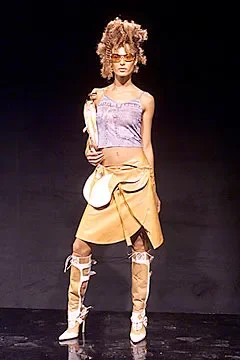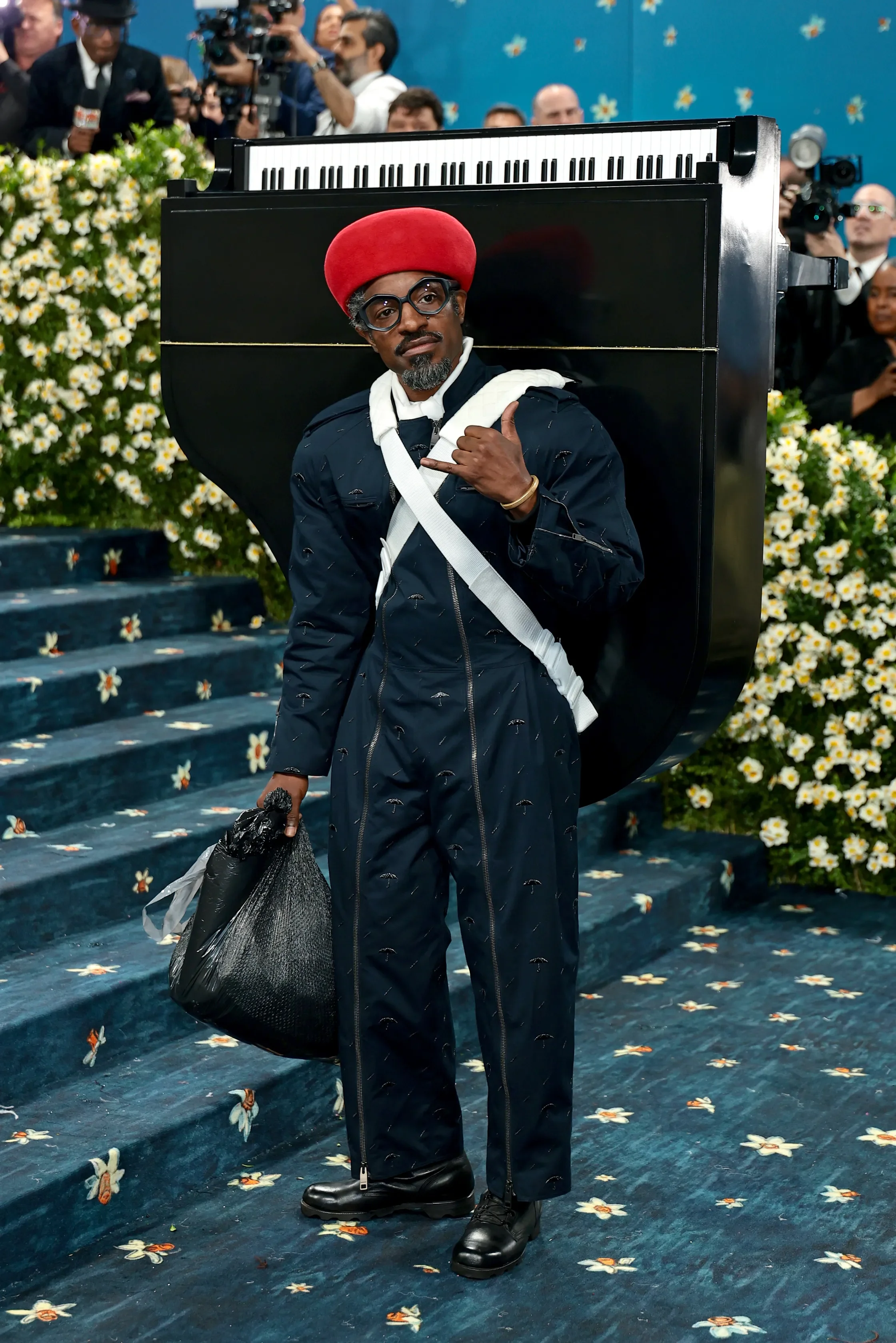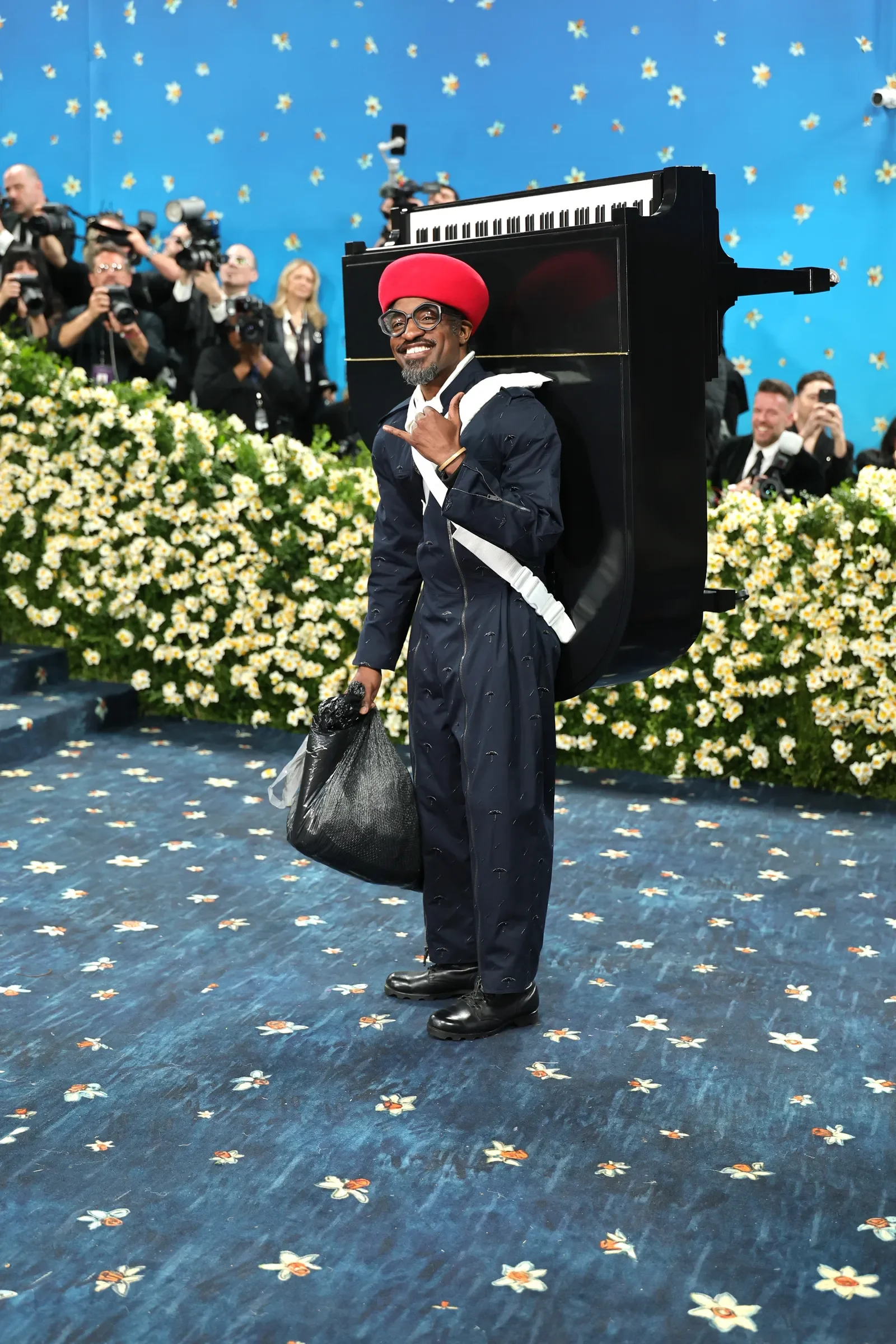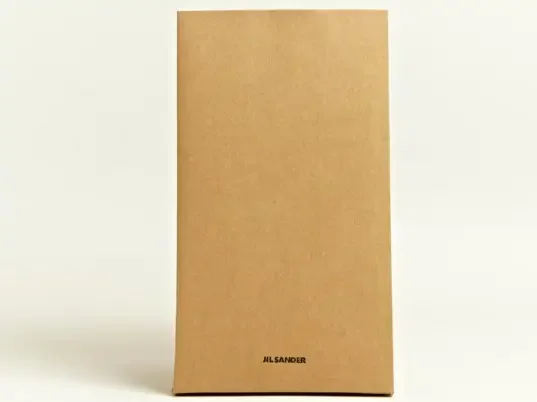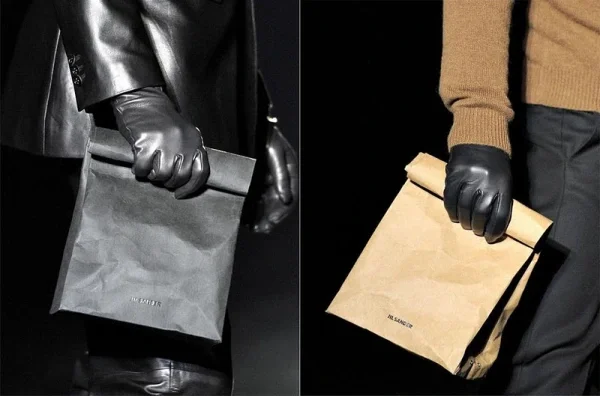‘Homeless Chic’ - a Trendy Dichotomy?
‘Homeless chic’ is a dichotomous phrase that many might pucker their lips to hear or read. The style, often partnering a term for the unhoused with one of elevated fashion, draws its primary inspiration from people who live on the streets. John Galliano allegedly drew inspiration for one of the original homeless chic lines by walking the streets of Paris and noting the garb of those living between les rues. He turned that inspiration into pieces he placed on the Dior runway for their 2000 Spring/Summer show. Unsurprisingly, Galliano faced widespread criticism from this creative choice.
Despite the negative reception, the style has been maintained and reverberated around the fashion world for the last quarter of a century, making prominent stops at Jil Sander’s 2012 Vasari brown-bag clutch, Maison Margiela’s Destroyed Sneakers, The-Artist-Formally-Known-As-Kanye’s black plastic bag displays used for their Gap Line, and on. The style was always received with the same harsh backlash – until…recently?
Photos Courtesy of the Dior Spring 2000 Spring and Summer Collection - Vogue
A Recent Re-emergence of ‘Homeless Chic’
For the 2025 Met Gala, Andre 3000 wore a blue jumpsuit, a piano slung over his back, and a garbage bag in hand. His outfit was a real-life depiction of the sketch on the cover of the album of piano tracks he had just released, 7 Piano Sketches. The only notable addition to the outfit depicted on the album cover was the black garbage bag. Notable, however, might not be a suitable term – the only in-depth coverage of the music legend’s utilitarian accessory seemed to be New York Magazine’s Identification of the brand of garbage bag or The Cut wondering what could be inside.
Photos courtesy of Getty Images - Andre 3000 at the 2025 Met Gala
Contextually, the Garbage Bag’s presence at the Met Gala is significant. The night was dedicated to Black style and dandyism. Specifically, Black style which at its soul is meant to overthrow preexisting stereotypes. A homeless chic inspired accessory in such a celebratory context encourages us to give the idea behind the bag another chance. It's an invitation to step away from our preexisting ways of thinking and their accompanying stereotypes and try to understand what the style could mean in a new context. More so it can give a peek behind the curtain on why this style has stayed so prevalent despite apparent abhorrence from the public. On its surface, homeless chic doesn’t pass the sniff test.
Can Fashion Follow Society to Places of Harm?
Despite the backlash, homeless chic speaks to something in the ethos of the time and has yet to be culled from the industry. Often large social shifts are marked by intense shifts and trends in fashion. We see this evolution through the change from classic Western style to conservative suit and dress wear to the extreme color and flamboyance of the hippie and disco movements. What accompanied the color we saw in the 70’s? A new wave of sexual and racial liberties. Just like mini skirts caught fire in the '60s and '70s, we saw distressed and extremely worn clothes catching fire in the '10s and '20s as the United States plunged into social and economic turmoil from the 2008 economic crisis.
When fashion reflects society as a cosplay and caricature of the poorest among us, it’s certain to spark outrage. When the public sees models donned in apparel mirroring the people who cannot afford to eat – rage and disgust will follow. When the public sees these pieces priced for thousands of dollars while the humans who inspired them can’t afford clothes at all – rage and disgust will follow. Fashion, however, is not meant for the elite – though they often are the first to try it on. Fashion is an expression of the people. It is how we represent to the world who we are.
America Pushing the Population to New levels of Destitution
In the current climate of the country, it feels like the United States has been tossed from the frying pan and into the fire. As history continues to remind us, the burns are felt most predominately by those from lower socioeconomic groups. The gap between the rich and the poor is growing daily while social services are being meticulously cut like the grass on the Whitehouse lawn. People are feeling themselves tumble towards financial uncertainty. The Trump administration is slashing social programs many rely on for food and housing. The federal government enters trade and ground wars alike, and the value of the dollar is plummeting while prices on all goods are skyrocketing. This anxiety that the financial maelstrom is creating is finding expression through homeless chic stylings. Many are seeking comfort in the proliferation of the idea that it will still be cool to wear your shirt even though it has a hole in it.
Maison Margiela’s destroyed rendition of the Future High Top - Photo Courtesy of HypeBeast
The style stands for so much in the minds of those who find connection in its expression, but financial vulnerability and a drawing of class lines seem to be at its center. The gradual public embracing of the style, as the garbage bag’s quick acceptance at the Met Gala seems to suggest, indicates that it's becoming a way for those who feel like they’re part of the ‘have-not’s to distinguish themselves from the ‘have-way-too-much’es.
The Many Peripheries of Wearing ‘Homeless Chic’
Though homeless chic may still be a style that will face some ire in the public eye, it is becoming more and more the style of the modern-day counterculture. One can parallel the simultaneous rise of workwear for a more palatable example of the phenomena. Workwear is traditionally reserved for those doing manual labor. Manual labor jobs are likewise traditionally reserved for the lower working class people as the jobs are more dangerous than those in offices which are reserved for higher upper and middle class people. Due to the rigor of the work and the danger it presents, the clothing is tough and heavy and designed for utility more than comfort. Carhartt, Bulwark, and Cintas are all brands that produced specialized workwear for specifically dangerous jobs. It is not clothing meant to be worn to a dinner or to a party but over the last decade it would be hard to attend either without seeing pants with loops for hammers or boots with steel toes. Dior’s sells ready-to-wear cargo pants and carpenter jeans, likewise Balenciaga sells utility jeans and combat boots in two colors each.
Jil Sander’s Brown Paper Bag with $290 price tag - Photo Courtesy of Ecouterre
Workwear in upscale settings and homeless chic in nearly any setting are not aesthetics that make sense within the confines of our existing social code. You can almost hear your parents' voices in your head telling you not to wear a military jacket to a dinner party or jeans with the knees blown out to a Broadway show. To dress up to the archaic standards of these places, however, is to both show respect to a system not deserving of it and to be inauthentic to our class that is slowly slipping down the social ladder.
Homeless chic is a style for those who feel financial oppression and a mass rejection of the clothing and styles of the upper class. It lives in a dichotomy, stuck between those who reject the growing social gap, clinging to the styles that promised them ascension – and those who embrace the expression of their anxiety. Separated still from these incongruous sides are the high fashion elite who look to wear the clothes and leach profit from what they see as a fad instead of earnest expression. Finally, sitting behind it all are the people who are themselves at the mercy of poverty in America and are the real inspiration for the style. All of these influences will continue to act on the style and it will continue to grow both in popularity and notoriety before either more conservative minds prevail and it is shamed from the focus of the public eye or it melts into fashion canon. As the style evolves will it become a point of contention between classes or will its appropriative nature go too far?

